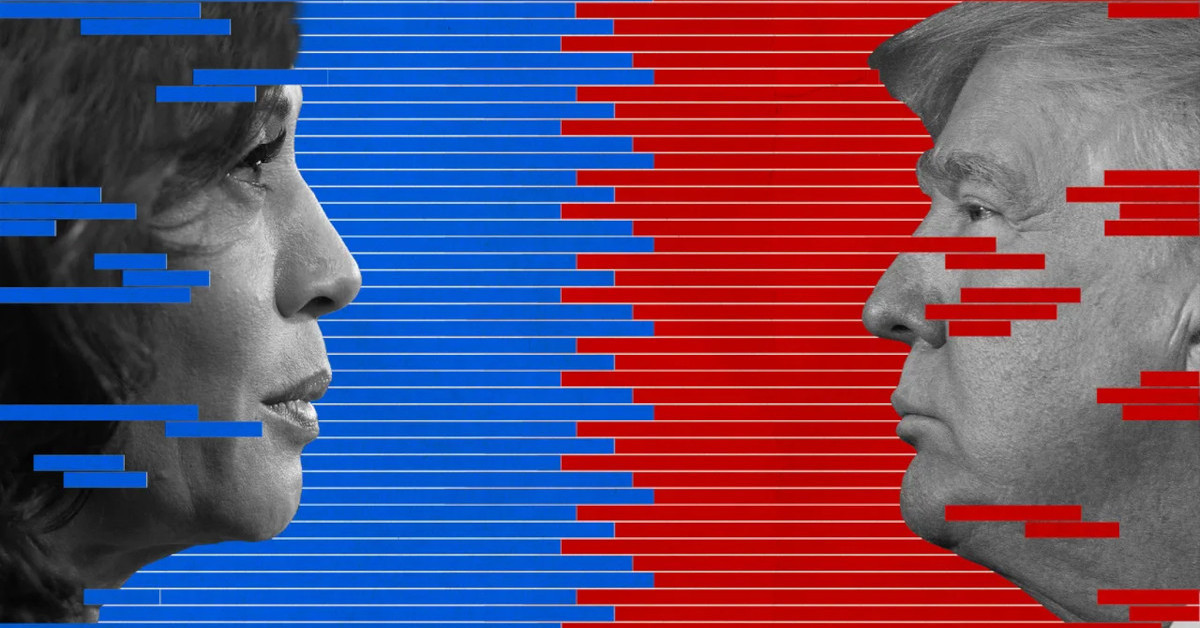Foggy economic conditions and fears of stagflation
While we are still dealing with the Russia-Ukraine conflict, Inflation in the United States started showing some signs of muting and decline. At the beginning of the month, most central banks already had their monetary policy meeting, mostly moving towards hawkish policies, with FED increasing 50bp interest rates and planning to reduce the balance sheet from Jun. At the same time, the latest lockdown in China with their Zero-Corvid policies increased uncertainty and slowed the world's second-largest economy. It threatens supply chains and a demand shock, especially for the Energy market. Let's review the most traded symbols in the market and see the overall condition.
Dollar:
At the beginning of the month, Fed increased the interest rates by 50bp and decided to start a balance sheet reduction in June. At the same time, they had a clear signal that 50bp rate hikes would be on the table in the next two meetings, and after that, the market condition will guide future decisions. The balance sheet will start with $30 and $17.5 billion per month, respectively, for mortgage-backed securities and Treasury securities for the first three months, and then will increase up to $35 and $60 Billion US dollars as a monthly cap.
These decisions by FED and higher risk in the market increased the US dollar through April and May so far, and for the rest of the month, we are still waiting to see the same factors as the main drivers. Also, US labor market data on the NFP report indicated that the labor market is also improving; however, corrective and consolidative forces in May are likely to be seen in the DXY chart. For the rest of the month, the leading USD drivers will be Core CPI (11th), PPI (12th), Retail Sales (17th), E Existing Home Sales (19th), Durable Goods orders (25th), and Q1 GDP on Thursday, May 26.
Euro:
With more stress and tensions in Europe, Euro was under pressure against its crosses, especially against the safe havens. Against the US dollar, Euro fell to five-year lows in late April, near $1.0470. The European economy is under pressure due to its intense dependence on Russian Gas and Oil. With all these concerns and the European Central Bank's decision to continue buying bonds through June, it can still be under pressure before H2 possible reverse, when market participants count on ECB rate hike and hawkish policies. At the same time, the gap between the ECB and other major central banks' policies and rates can hold the pressure on Euro, even in its return. For Euro, we have to closely follow the German ZEW Economic Sentiment (10th), ECB President Lagarde Speech (11th), CPI (18th), PMI's (24th), and German GDP on May 25.
Japanese Yen:
The Yen fell to its more than 20-year low; however, it is still not a concern. Somehow we can say that Japanese economic officials may not be too upset about the Yen. For several years officials in Japan have been looking after higher inflation; with the current rate of the Yen, inflation is likely to increase. BOJ also strengthened its determination to cap the 10-year yield as another easy money policy, which can hold the same rates for the Yen, at least in the short term. Weakness in the Yen is not just because of the Bank of Japan's policies; stronger US dollar and US Treasury bond Yields are also putting more pressure on the Yen against the US dollar. So far, Yen is losing almost 12% on an annual scale. This observed weakness in Yen made asset managers and hedge funds decrease their Yen reserves, as it does not seem like a less volatile and safe haven than before. For the rest of the month in May, Household Spending (10th), Trade Balance (12th), GDP (18th), and CPI (20th & 27th) are the most important data to watch.
British Pound:
With another 4.3% decline in April, which was the largest since October 2016, Pound printed its fourth consecutive monthly decline. For the British economy and Sterling, the main driver in May will be the inflation levels, especially after Energy bills rise. Inflation in the United Kingdom is increasing very sharply, and it is estimated to move above 10% in May with more expensive home energy bills. With another 25 bp rate hike on May 5, the base rate now reached 1%, allowing the central bank to sell its holdings, not passively wait for holdings to mature. Like Euro, British Pound is also suffering from the gap between the BoE and FED rates and more interest on US bonds than British Gilt because of higher treasury yields and more trust in the US economy than the British. On the data and events front, we have to watch the GDP & Trade Balance (12th), Labor market data (17th), CPI & PPI (18th), and Retail Sales (20th) more closely to find the Sterling direction in the Forex market.
Gold:
Not a volatile month is expected for Gold price in May, as we are again in a territory that can say that opposing factors face each other and prevent price increases and more falls.
Gold should be involved in a side range for the rest of the month, resulting from opposite factors. Conflict and tensions in Ukraine increase the safe-haven demand for Gold, while the expensive US dollar and higher bond yields pause the bulls. Gold's safe-haven loses its attraction when interest rates rise. Add the stock market conditions to this uncertainty of the next direction to realize why it can not find its path. Another reason for more pressure on Gold is the Silver attraction in such a market situation. Silver can be used as a safe-haven asset, and at the same time, its industrial metal, used by manufacturers of goods including solar panels, automobiles, and electronics. Inflation and Geopolitical tensions will remain the main market drivers for Gold.
WTI:
Higher gas prices in Europe and even these limited sanctions against Russian oil brought enough tension to the Energy markets. In April, mostly, it held a range. For May, it sounds like time to move. In May, the main oil market drivers will be the global economic developments, overall stock market sentiment, and geopolitical tensions.
The current global economy is slowing down enough to cause demand concerns, but we sometimes must remember Covid-19's possible return, as China had substantial restrictions and lockdowns in April. Lockdowns in Shanghai and the closure of many manufacturing enterprises have hit the demand to send the West Texas Intermediate Crude Oil price down to $93 for a few days. On the other hand, tensions in Ukraine reached a critical point. Now we are aware that this war will not end so fast. Therefore, either western economies should close their eyes to what they call human rights and keep buying the Russian Oil and Gas and Paying in Ruble, which would not be much positive for the Oil market, or should, in a primarily political game and act should stop buying the Oil and Gas from Russia, which will cause a which causes another recession in EU zone and will send the price to much higher levels. Therefore, while OPEC+, in its last meeting, adhered to its 400,000-barrel increase plan without any changes, hopes of a return to Iranian and Venezuelan oil have also been dashed, at least in the short term, and downtrend possibilities are getting weaker.
Bitcoin:
April was one of the worse months for BTC, with a 16.2% loss. At the beginning of May, bitcoin fell under $37,000 for a short time and then returned to over $ 40,000; however, the movement was not strong enough to hold this critical pivot. With higher risk in the market, an increasing US dollar index, and a sharp decline in stock markets, the cryptocurrency market also lost its charm. So far, on May 9, and at the time of writing, BTC lost another 16%. May will be the worst month for Bitcoin in recent years if we can see the same trend. Overall, market sentiment affects the cryptocurrency market as well. When we have a high risk in the market and inflation fears increase, it would not be positive for the risky assets. On the flip side, since these levels can attract buyers waiting to enter the market, activated purchase orders can change the direction. 28,000 US dollars is a critical support for BTC, and breaching this level, would encourage the bears while changing the overall market sentiment and conditions and reducing the risks; this can bring the bulls back on the charts.
Wall Street:
Investors spent a whole stressful month in April, with Nasdaq Composite tumbling 13.3% to print the worse month since 2008, while SP500, with an 8.8% loss, closed at its lowest level since May 2021. And NASDAQ industrial average lost more than 23% from its last all-time high in November 2021. We can name three reasons for the current downtrend: inflation, the war in Ukraine, and a spike in Chinese Covid-19 cases.
Probably the most dangerous is higher inflation. Inflation will reduce production and economic growth. At the same time, with higher oil prices, a return to normal economic conditions and development seems far more non-accessible. On the other hand, one of the consequences of the continuing war in Ukraine is higher production prices and consumer caution to spend money and cut unnecessary goods.
On the monetary policy front, markets eye more significant Fed rate hikes in the next two meetings. With more hawkish policies, if FED could not control inflation, the risk of stagflation would increase, and it is one of the biggest fears of market participants.
For the rest of the month, PPI and CPI data will be very important to follow. Inflation numbers in April had some signs of softness, and if we can see the same signals in May numbers as well, then inflation concerns will lessen, which could be a return signal in stock prices.


















